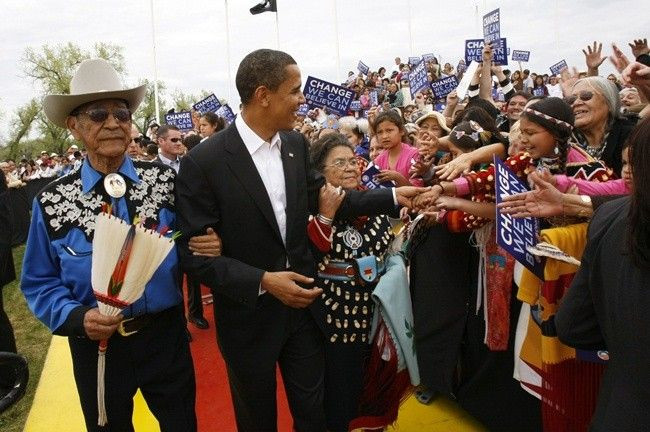Obama plans second American Indian conference

The Obama administration is pushing for closer ties with America Indian tribes, announcing a second presidential conference with the tribes in December.
Each of the 565 federally recognized tribes - that function legally as domestic dependent nations within the United States - is being invited to send one representative to a December 16 conference where participants will have the opportunity to interact directly with the President and representatives from the highest levels of his Administration, the White House said Monday.
The December 16 event will be the second White House Tribal Nations Conference for the Obama administration. The President had made a commitment to reach out to tribes when he was campaigning for election in 2008.
At a conference with tribal leaders last November, Obama vowed to more closely engage tribes through federal agencies.
Department of the Interior Secretary Ken Salazar - who spoke at the annual convention of the National Congress of American Indians on Monday - said that over the past year, his department had held meetings in seven cities with 300 tribal representatives and more than 250 federal officials to draft a consultation policy that will soon be submitted for review and comment to tribes.
I expect to put our new policy in place this spring, he said. The new policy will help tribal leaders be more engaged in policy development and will result in a process that is more transparent, comprehensive and effective.
The NCAI represents about half of the American Indian tribes in the United States.
Salazar also announced Monday the completion of 14 school projects funded by the 2009 Recovery Act. This includes six replacement schools, five replacement facilities, and three facilities improvements. He also announced that the Administration was issuing a fourth letter of support for the White Mountain Apache water settlement in Arizona.
The water settlement will greatly expand the current water delivery system to meet the need of the reservation, Salazar said.. The Administration says with the latest letter, the government has supported nearly $1 billion of Indian water projects.
Norman Ration, Executive Director of the National Indian Youth Council, expected that improving education for American Indians on and off reservations would be one issue that Salazar was likely to address.
There are a lot of issues involving native American education, Ration said. His organization works primarily with native Americans living in urban areas, which total about 2.2. million.
Keith Franklin, president of the Albuquerque Metro Native American Coalition, made a presentation on Sunday on behalf of his organization and the NIYC as a part of the tribal education department national forum, which included presentations from tribal people, non-profit organizations and public schools, among others.
The groups said Native American high school graduates in Albuquerque, New Mexico were the group that required the highest percentage of remedial classes to get up to speed in college, citing a 2000-2004 study by the State of New Mexico.
Overall, about 44 percent of all students required remedial classes. American Indian students required remedial classes 66 percent of the time, Hispanic students 58 percent of the time and Caucasian students 36 percent of the time.
© Copyright IBTimes 2025. All rights reserved.





















